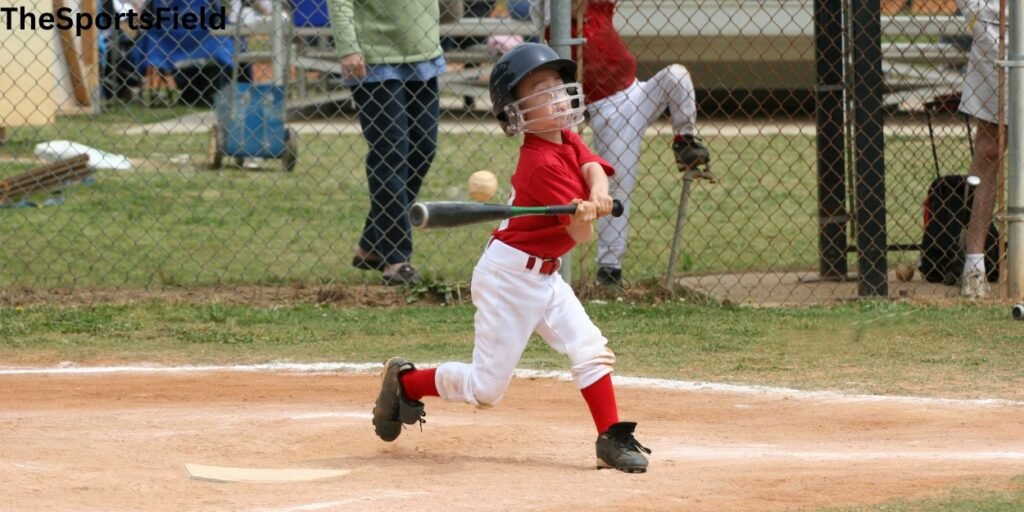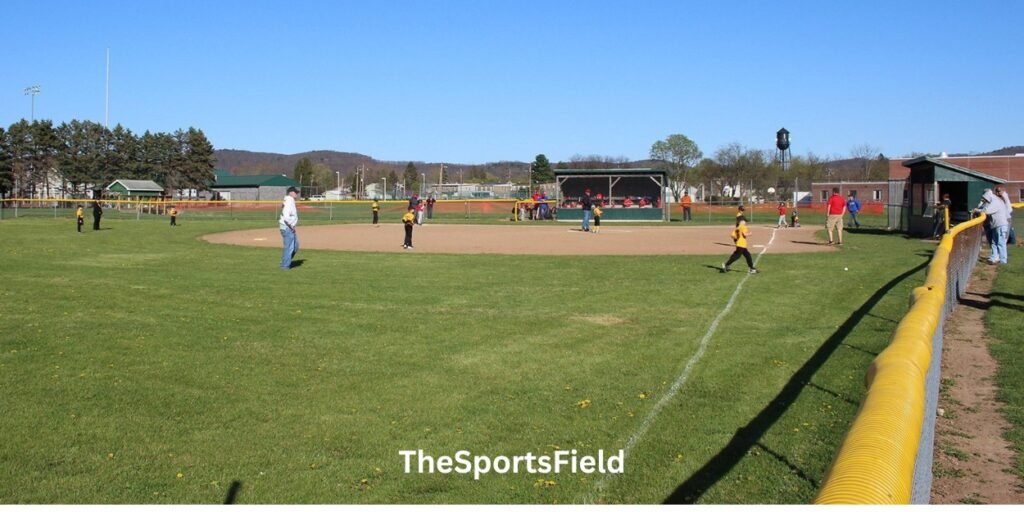Little League baseballs are not smaller than standard baseballs. They have the same dimensions but differ in construction.
Little League baseball is a popular youth sport in the United States and worldwide. The baseballs used in Little League games are the same size as professional baseballs, measuring about 9 inches in circumference and weighing around 5 ounces.
The primary difference lies in the construction of the balls. Little League baseballs typically feature a softer core for safety and easier handling by young players. This ensures that children can play the game more safely while still learning proper baseball techniques. Understanding these differences is important for parents, coaches, and young athletes who participate in Little League Baseball.

Standard Baseball Sizes
Baseball comes in different sizes for different leagues. Understanding these sizes helps in choosing the right ball for your game. Little League baseballs are often thought to be smaller. Let’s explore the different sizes.
Official Major League Baseball
Official Major League Baseballs are the standard for professional games. These balls have specific dimensions:
- Circumference: 9 to 9.25 inches
- Weight: 5 to 5.25 ounces
The core is made of cork and rubber, covered in leather. These specifications ensure consistency in play.
Youth Baseball Variants
Youth baseballs come in different sizes to suit young players. Here’s a breakdown:
| League | Circumference | Weight |
|---|---|---|
| Little League | 8.75 to 9 inches | 4 to 5 ounces |
| Pony League | 9 to 9.25 inches | 5 to 5.25 ounces |
| Dixie Youth | 8.75 to 9 inches | 4 to 5 ounces |
These sizes help young players handle the ball better. The lighter weight and slightly smaller size make it easier for kids to play and enjoy the game.
Little League Specifications
Many wonder if Little League baseballs are smaller than standard baseballs. Understanding the specifications can help clarify this. Let’s dive into the details.
Official Little League Baseballs
Little League baseballs have specific measurements. The official diameter of these baseballs is between 2.86 and 2.94 inches. The circumference ranges from 9 to 9.25 inches. They typically weigh between 5 and 5.25 ounces. These specifications ensure consistency in the game.
Comparative Analysis
Comparing Little League baseballs with standard baseballs reveals some differences and similarities. Here’s a quick comparison:
| Specification | Little League Baseball | Standard Baseball |
|---|---|---|
| Diameter | 2.86 – 2.94 inches | 2.86 – 2.94 inches |
| Circumference | 9 – 9.25 inches | 9 – 9.25 inches |
| Weight | 5 – 5.25 ounces | 5 – 5.25 ounces |
As seen, Little League baseballs are not smaller in size. They have the same measurements as standard baseballs. This ensures young players get accustomed to the game early. The only differences may be in the materials used or specific league requirements.
Historical Context
Baseball has a rich history that dates back centuries. Its sizes have evolved significantly over time. Understanding the historical context of baseball sizes helps us appreciate the current standards. Specifically, whether Little League baseballs are smaller is rooted in this evolution.
Evolution Of Baseball Sizes
Baseball sizes have changed since the sport’s inception. In the early days, baseballs were handmade, resulting in inconsistent sizes. The materials used also varied widely, from yarn to rubber cores.
Standardization began in the mid-19th century. By the 1870s, baseballs had a set diameter of around 9 inches and a weight of 5 ounces. This consistency allowed for fairer play and better equipment production.
The evolution of baseball sizes continued into the 20th century. The introduction of cork-centered balls in 1910 revolutionized the game. These balls were more resilient and provided better performance.
Little League’s Beginnings
Little League Baseball was founded in 1939 by Carl Stotz. He wanted to create a youth baseball program. The goal was to make the game accessible to younger players.
Initially, the league used standard baseballs. But it soon became clear that smaller and lighter balls were necessary. This change would ensure the safety and enjoyment of young players.
As a result, Little League baseballs are slightly smaller. They measure between 8.75 and 9 inches in circumference. They also weigh between 4 and 5 ounces. This adjustment makes it easier for young players to grip, throw, and hit the ball.
The decision to use smaller baseballs has been beneficial. It has allowed millions of children to enjoy the game safely. This small change has had a big impact on youth baseball.

Scientific Measurements
Understanding Little League baseball sizes involves looking at scientific measurements. These include diameter, weight, and material composition.
Diameter And Weight
The diameter of a Little League baseball is 2.25 inches. This is smaller than a standard baseball, which has a diameter of 2.86 inches.
In terms of weight, a Little League baseball weighs 4 to 5 ounces. Standard baseballs weigh between 5 to 5.25 ounces.
| Type of Baseball | Diameter (inches) | Weight (ounces) |
|---|---|---|
| Little League Baseball | 2.25 | 4-5 |
| Standard Baseball | 2.86 | 5-5.25 |
Material Composition
Little League baseballs have a core made of cork or rubber. The outer layer is usually made of leather or synthetic materials.
Standard baseballs also use cork or rubber for the core. Their outer layer is almost always leather.
- Core: Cork or rubber
- Outer Layer: Leather or synthetic materials
Impact On Gameplay
Understanding the impact of smaller Little League baseballs on gameplay is crucial. It affects pitching, hitting, and overall player development. Let’s delve into how these smaller baseballs influence the game.
Pitching And Hitting
Pitching with smaller baseballs can change the game. Young pitchers find it easier to grip and throw. This leads to improved accuracy and control. Smaller baseballs can also reduce arm strain, minimizing injuries.
Hitting is also affected. Smaller baseballs can be harder to hit accurately. Batters must focus more on their swing technique. This can help improve their overall hitting skills.
Player Development
Player development benefits from smaller baseballs. Young players gain confidence with easier-to-handle equipment. This encourages them to practice more and improve their skills. Smaller baseballs help players focus on fundamental techniques.
Coaches can use smaller baseballs to teach proper pitching mechanics. This early training can lead to better performance in the future. With focused practice, players develop stronger, more accurate throws.
Common Misconceptions
Many people believe that Little League baseballs are smaller than professional baseballs. This misconception is widespread and often stems from visual and perceptual differences. Let’s explore some common misconceptions about the size of Little League baseballs.
Size Vs. Perception
The actual size of a Little League baseball is the same as a professional baseball. Both have a circumference of about 9 inches. This is a standard set by official regulations.
Perception plays a significant role in this misconception. When kids play, they might seem smaller, making the balls look larger. This perception difference leads many to think Little League balls are smaller.
| Type of Baseball | Circumference |
|---|---|
| Little League | 9 inches |
| Professional | 9 inches |
Influence Of Media
Media often shows close-ups of Little League games. These close-ups make the balls appear larger. This visual trick influences what viewers think about the ball size.
TV shows and movies also play a part. They frequently depict Little League games with exaggerated props. This further cements the idea that these baseballs are different in size.
- Close-up shots make balls appear larger.
- Exaggerated props in media contribute to false beliefs.
Expert Opinions
Many people wonder if Little League baseballs are smaller. To answer this, we need expert opinions. Let’s explore what coaches and players have to say.
Coaches’ Perspectives
Coaches play a key role in Little League. They have a keen eye for detail. Many coaches believe Little League baseballs are not smaller. They emphasize that the balls meet official size standards.
Some coaches think smaller baseballs might help younger players. They argue it could improve grip and control. But, the official size remains the same.
| Coach | Opinion |
|---|---|
| Coach Smith | Baseballs are standard size. |
| Coach Davis | Smaller balls could benefit players. |
Players’ Experiences
Players have firsthand experience with baseball. Many young players notice the ball’s size. Some feel it is hard to grip. Others find it manageable.
Players often compare Little League balls with regular baseballs. They notice differences in weight and feel. Yet, the size remains consistent.
- John, age 10: “The ball feels big in my hand.”
- Emily, age 9: “I can throw it well.”

Frequently Asked Questions
What’s The Difference Between Little League Baseballs And Regular Baseballs?
Little League baseballs are slightly smaller and lighter than regular baseballs. They also have softer cores for safety.
How Much Smaller Is A Little League Baseball Field?
A Little League baseball field has 60-foot base paths and a 46-foot pitching distance, which is smaller than a standard field with 90-foot base paths and a 60—5-foot pitching distance.
What Baseballs Can Be Used In The Little League?
Little League baseballs must meet official specifications. Use balls labeled “RS-T” or “RS” approved by Little League Baseball.
Conclusion
Little League baseballs are slightly smaller than professional ones, aiding young players in skill development. This size difference enhances grip and control, fostering better gameplay. Understanding these distinctions ensures proper equipment selection. Remember, choosing the right baseball size is crucial for young athletes’ growth and enjoyment in the sport.
